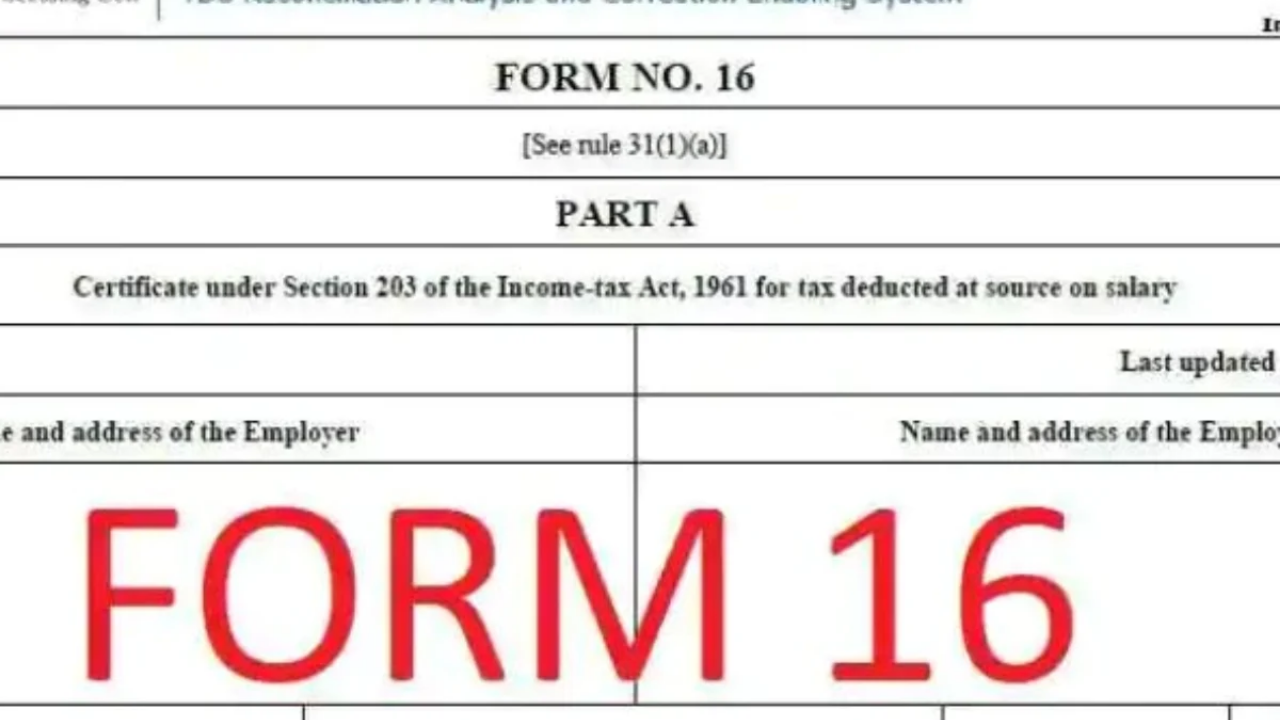For salaried employees across India, Form 16 is a crucial document for filing income tax returns (ITR). Here’s a quick guide on why it’s so important, when you can expect to receive it, and what key details it contains.
What is Form 16?
Simply put, Form 16 is a TDS (Tax Deducted at Source) certificate issued by your employer. It confirms that they’ve deducted tax from your salary and deposited it with the Income Tax Department on your behalf.
Why is Form 16 So Important for Filing Your ITR?
- Proof of Income and Tax Paid: It’s your official record of how much you earned and how much tax was deducted during the financial year.
- Simplifies Tax Filing: Form 16 provides a detailed breakdown of your salary, allowances, and claimed deductions. This information makes it much easier to accurately fill out your income tax return, and many online tax filing platforms can even pre-fill details directly from it.
- Verification: You can use Form 16 to cross-check the tax credits shown in your Form 26AS (your tax credit statement), ensuring everything matches up.
- Financial Proof: It’s often required as proof of income when applying for loans, credit cards, or even certain visas.
When Can You Expect Your Form 16?
By law, employers must issue Form 16 by June 15th of the year following the financial year for which it applies. So, for the financial year 2024-25, you should receive your Form 16 by June 15, 2025.
Key Details You’ll Find in Form 16
Form 16 typically comes in two parts:
- Part A: This section focuses on your employer’s and your basic details, along with a summary of the tax deducted and deposited. It includes:
- Your employer’s and your name, address, PAN, and TAN.
- The period of your employment.
- A quarterly summary of tax deducted and deposited.
- Part B: This is where you’ll find a detailed breakdown of your salary and all the deductions and exemptions you’ve claimed. This includes:
- Detailed Salary Breakup: Components like your basic salary, allowances, and perquisites.
- Exemptions Under Section 10: This covers tax-exempt allowances such as House Rent Allowance (HRA) and Leave Travel Allowance (LTA). For HRA, the tax exemption is calculated based on specific rules related to actual HRA received, rent paid, and your salary.
- Deductions Under Chapter VI-A: This lists crucial deductions that reduce your taxable income. The most common ones are:
- Section 80C: This allows deductions up to ₹1.5 lakh for investments and expenses like Provident Fund (PF) contributions, life insurance premiums, Public Provident Fund (PPF), ELSS mutual funds, and home loan principal repayment, among others.
- Section 80D: This covers deductions for health insurance premiums paid for yourself, your family, and your parents, as well as certain medical expenses for senior citizens.
In essence, Form 16 consolidates all the necessary information about your income and tax deductions, making your tax filing process straightforward and accurate.
